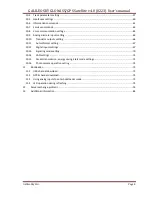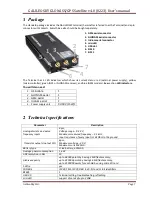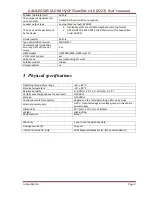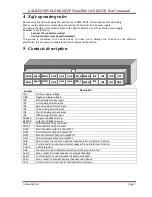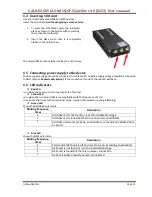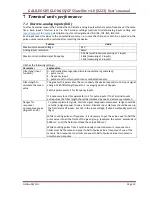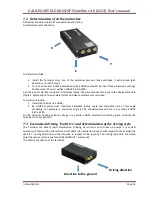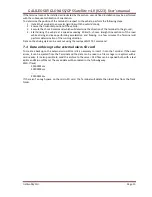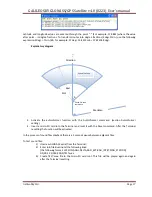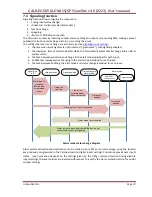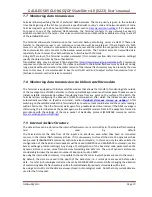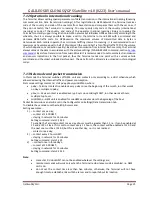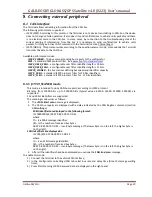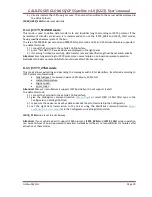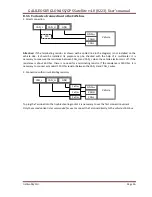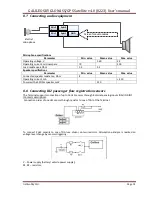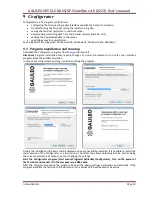
GALILEOSKY GLONASS/GPS Satellite v4.0 (0223) User’s manual
GalileoSky Ltd.
Page 18
7.6
Signaling function
Signaling function allows assigning the response to:
1.
analog input status change;
2.
strikes and inclines (accelerometer data);
3.
location change;
4.
speeding;
5.
iButton or RFID card connection.
The Terminal can react by inverting outputs status, sending an output pulse, sending SMS, making a preset
number(s) telephone call, taking a picture or recording the point.
The settings that users can change are as follows (section
Signaling mode setting)
:
1.
the time when input signals are not processed (“green wave”), with signaling enabled;
2.
the maximum time of alert mode after which the Terminal will automatically change into an alarm
system mode;
3.
the time between activation and change to the alert mode individual for each input;
4.
an SMS text message when changing to the alert mode individual for each input;
5.
the time between enabling the alert mode and status change individual for each input.
Alarm mode states change diagram
Alarm system activation and deactivation can be made by input, SMS or server message, using the iButton
key previously programmed in the Terminal (section Digital inputs setting). Commands prevail over inputs
states. Input activation depends on the settings given by the InCfg command (section Analog-discrete
inputs setting), the level outputs are inverted with respect to is set by the Out command (section Transistor
outputs setting).
Alarm mode
«G
reen wave
»
Signaling is
off
Signaling mode
Timeout before
alarm mode
SMS, GPRS,
calls, pictures
Outs activation
Alarm system input is deactivated, iButton is on or
a command is sent
from signaling
Alarm input is
activated,
iButton is on
or command
is sent
Timeout is
expired
Timeout is
expired
Timeout is
expired
Sensor or
accelerometer
input is activated
“Alarm button” input is activated
Alarm mode time is expired

